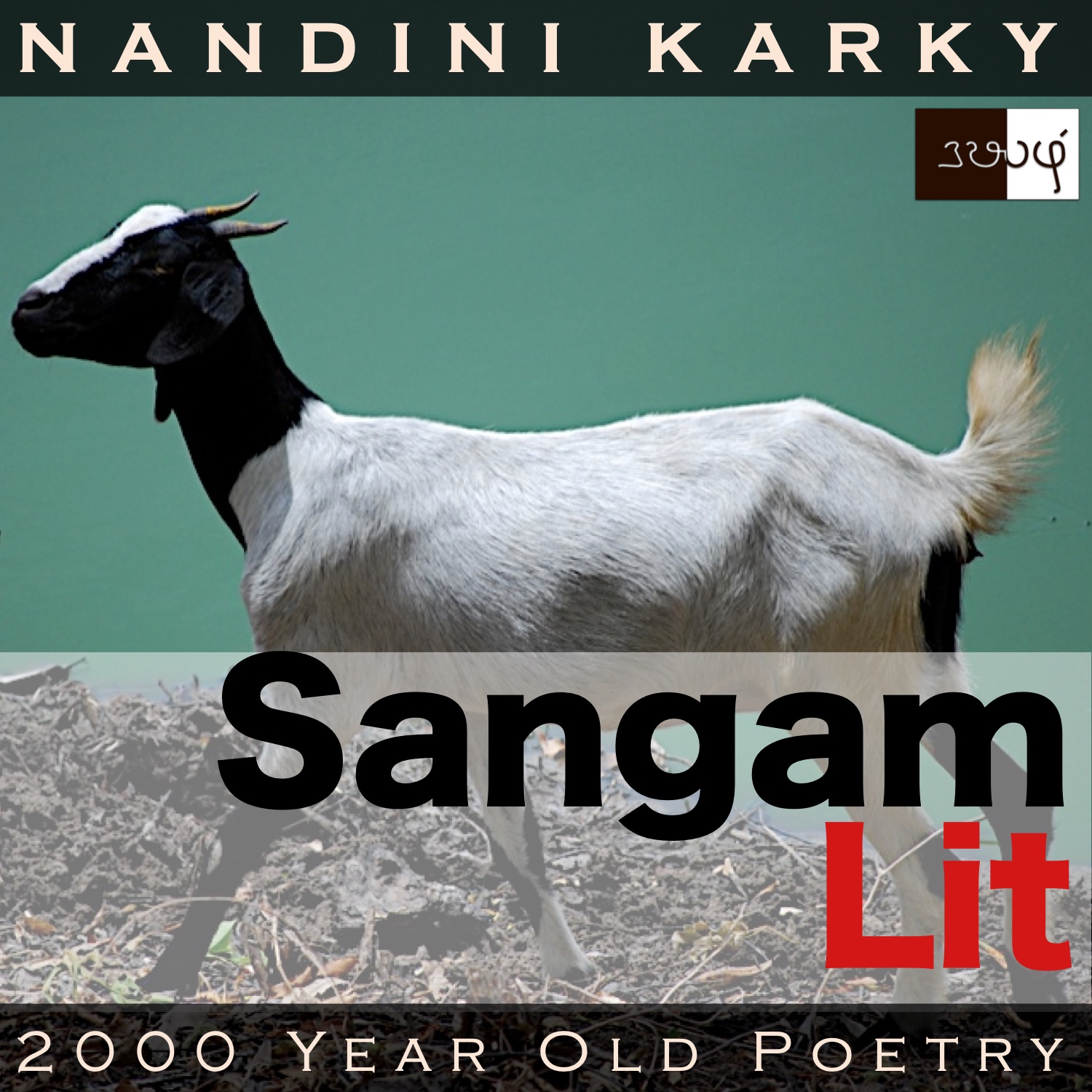Podcast: Play in new window | Download
Subscribe: Apple Podcasts | Spotify | Amazon Music | Android | iHeartRadio | TuneIn | RSS | More

In this episode, we observe the courage of a person in questioning false beliefs, as portrayed in Sangam Literary work, Kurunthogai 362, penned by Vempatroor Kannan Koothanaar. The verse is situated in the mountains of ‘Kurinji’ and speaks in the voice of the confidante to the priest Velan, passing on a clear message about the lady’s relationship with the man to the listening kith and kin.
முருகு அயர்ந்து வந்த முதுவாய் வேல!
சினவல் ஓம்புமதி; வினவுவது உடையேன்;
பல் வேறு உருவின் சில் அவிழ் மடையொடு,
சிறு மறி கொன்று, இவள் நறு நுதல் நீவி,
வணங்கினை கொடுத்திஆயின், அணங்கிய
விண் தோய் மா மலைச் சிலம்பன்
ஒண் தார் அகலமும் உண்ணுமோ, பலியே?
‘Answer my question before you start the sacrifice’ demands a voice in this verse. In the opening words ‘முருகு அயர்ந்து வந்த முதுவாய் வேல’ meaning ‘wise priest Velan, devotee of God Murugu’, we learn of a deity and his worship in Sangam times. The phrase ‘வினவுவது உடையேன்’ meaning ‘I have a question within’ hints at the core theme. Animal sacrifice makes its presence felt in ‘சிறு மறி கொன்று’ meaning ‘killing a small goat’. The hero of the verse is sketched by the one-line portrait ‘விண் தோய் மா மலைச் சிலம்பன்’ meaning ‘the man from the sky-high, huge mountains’. Ending with the words ‘உண்ணுமோ பலியே’ meaning ‘will it eat the sacrifice?’, the verse beckons us to explore more.
A socio-cultural practice being challenged with a question, sounds like! The context reveals that the man and lady were leading a love relationship and the man was trysting with the lady for a while. When the lady was not able to meet with the man on some days, changes appeared on her form, which caused worry in the lady’s family. The lady’s mother seeks the help of Velan, the priest, who decides to perform ‘Veri’ ritual to appease God Murugu’s ire. As he is about to begin his ceremony, while the lady’s kith and kin are listening, the confidante says to the priest Velan, “O worshipper of God Murugu, O wise Velan! Set aside your anger for I have a question to ask of you. Along with a few morsels of rice in colours many, if you kill a little goat, stroke the lady’s fragrant forehead, and render with prayer, will the chest, adorned with radiant garlands, of the one who has afflicted her, the man from the sky-high, huge mountains, eat that sacrifice too?” With these words, the confidante declares to all those listening that the only person who was responsible for the changes in the lady was the man from the mountains.
That sure is a daring statement from a young woman! Let’s delve into the nuances by listening to the confidante’s words closely. She starts by praising Velan as a wise person and a follower of God Murugu. Then, she puts forth a request to him asking him not to get angry at her, because she has a question that she wants answered. This, the confidante follows with the description of the ‘Veri’ ritual, wherein morsels of rice in varying colours are heaped. The varying colours could be indication of the different rice varieties in those regions. Next, along with this, a small goat is planned to be killed. As its blood drops on the sand below, the priest would pick up the blood-filled sand and streak that on the lady’s forehead. The confidante then comes to the meat of the matter and asks whether this meat and rice offering that Velan plans for God Murugu would be eaten by the garland-adorned chest of the man, who is the true reason for the lady’s affliction.
With a punch, the confidante delivers the message that it’s not God who has caused the changes in the lady but the man from the mountains. So, what are you going to achieve by killing that poor little goat and rendering this offering to God Murugu, the confidante asks the priest. The beauty of this verse is how a woman stands up to a priest and challenges his superstitious beliefs. Though the confidante knows not the word or its meaning, it’s ‘logic’ that’s driving her argument and with that tool of reason, she shatters vague myths, and journeys in a straight line, to the core of the concern! If a young lady from two thousand years ago can do this, can’t we now do the same and stand up for the truth, in whatever way we can, with logic and clarity?




Somewhere I read, the MURUGU was the god worshipped by sangam period Tamils. Murugu is neither male nor female, This concept was evolved by the people at that time. if it is male then it will lead to male dominance and vise versa. So they created the gender neutral MURUGU which over the time transformed to MURUGAN as a male god
I wish that was a true inference about Murugu demonstrating the equality of genders in the Sangam era. However, of the poems I have seen this far, in one verse – Natrinai 82, there appears a line ‘முருகு புணர்ந்து இயன்ற வள்ளி போல’ opposing this theory. Here, it’s evident that Murugu is of the male gender, the lover of this lady called ‘Valli’. This made me wonder at that time, could Murugu be the name of a leader, who later became a legend, and then a God!